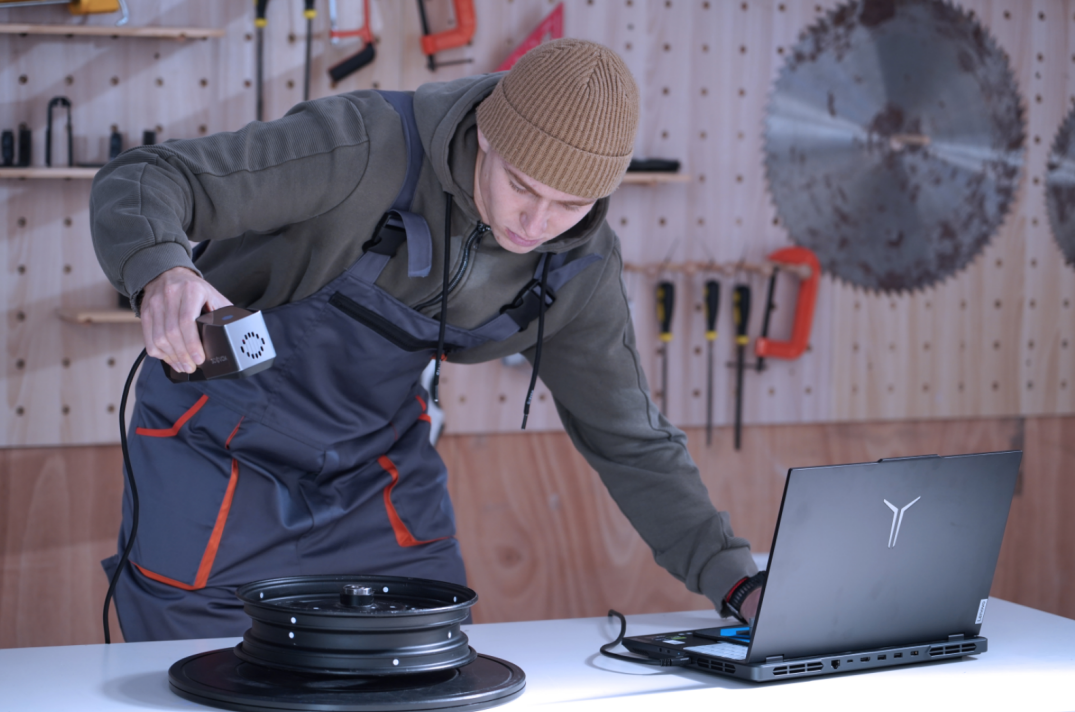Using a Portable Structured-Light Scanner to 3D Scan an Object
02/23/25
In the realm of modern manufacturing and design, knowing how to effectively utilize a 3D scanner industrial solution can greatly enhance your capabilities. A 3D scanner for industrial use, particularly a portable structured-light scanner, allows for the accurate capture of object details and shapes, making it an invaluable tool in various applications. In this guide, we will discuss how to 3D scan an object using this technology, with insights provided by 3DeVOK, a leader in advanced 3D scanning solutions.

A portable structured-light scanner uses a series of light patterns projected onto an object to capture its shape and surface features. This method is particularly effective in industrial settings where precision and reliability are crucial. The scanner captures the deformation of the light patterns as they reflect off the object, creating a detailed 3D model. This technology is especially useful for industries such as aerospace, automotive, and manufacturing, where detailed and accurate measurements are essential.
The portability of these scanners allows for flexibility in various environments, making it easier to scan objects in situ without the need for extensive setup or transportation. This advantage is particularly beneficial for quality control, reverse engineering, and product development processes.
Preparing for the 3D Scanning Process
To ensure an effective scanning experience, several preparatory steps should be followed. Begin by selecting the object you wish to scan, ensuring it has sufficient detail for the scanner to capture effectively. Avoid shiny or transparent surfaces, as these can interfere with the scanning process.
Next, set up your environment. A well-lit area is important, but avoid direct sunlight or harsh overhead lights that can create glare. Stabilize the object securely to prevent any movement during the scanning process. This stability is vital for achieving accurate results with your 3D scanner for industrial use.
Executing the 3D Scanning Process
Once the object and environment are prepared, you can proceed with the scanning. Power on your 3D scanner industrial device and connect it to your computer or mobile device if necessary. Ensure that all software is installed and up to date.
Start by calibrating the scanner according to the manufacturer’s instructions. Position the scanner at an appropriate distance from the object, ensuring that the entire object is within the scanner’s field of view. Initiate the scanning process through the software interface, allowing the scanner to project light patterns onto the object. Move the scanner around the object or rotate the object itself to capture all angles and details.
Monitor the scan in real time to ensure complete coverage. After the scanning is complete, use the software to process the captured data. This post-processing may include cleaning up the model, filling in gaps, and refining details to create a final high-quality 3D model.
Applications of Portable Structured-Light Scanners
The advantages of using a high precision 3D scanner in industrial applications are numerous. For instance, in aerospace, accurate scans of components can lead to better quality control and compliance with safety standards. In automotive manufacturing, detailed scans can help in prototyping and design verification, leading to improved product outcomes.
In addition, these scanners are valuable in sectors like healthcare, where they can be used to create accurate anatomical models for surgical planning. The versatility of a 3D scanner for industrial use allows it to be employed across various fields, enhancing productivity and fostering innovation.
Conclusion
Mastering the use of a 3D scanner for industrial use is crucial for professionals looking to enhance their operational capabilities. By following the outlined steps, you can effectively scan objects and produce detailed digital representations that can significantly improve workflows. With the support of companies like 3DeVOK, you can access advanced technologies that facilitate accuracy and efficiency in your projects. As you explore the potential of 3D scanning, remember that the right tools and techniques can transform your industrial processes, leading to greater innovation and success.
Related Articles
View Our Product





